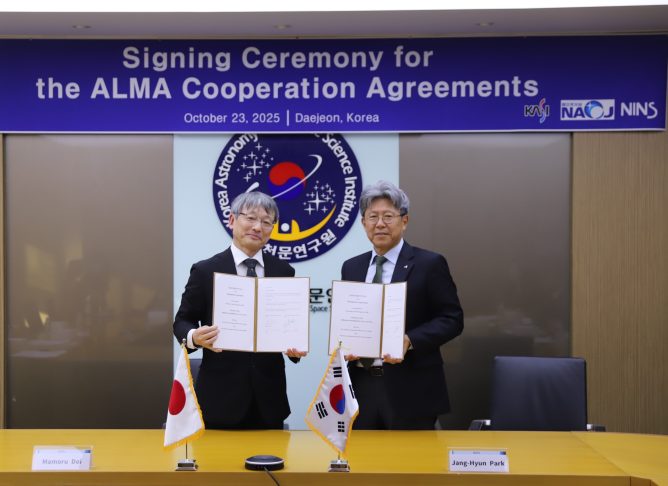ALMA Morita Array, developed by the National Astronomical Observatory of Japan (NAOJ), received Good Design Gold Award at the Good Design Award 2013 sponsored by the Japan Institute of Design Promotion (JDP). This is the second Gold Award given to an NAOJ telescope following the first one to the Subaru Telescope at the summit of Mauna Kea, Hawaii in 2000.
Satoru Iguchi, a professor at NAOJ and East Asia ALMA Project Manager, says, “We are very happy with the Gold Award to the Morita Array this time. There were various challenges in the development of the antenna, receiver, and correlator as well as in the establishment of infrastructure to realize the state-of-the-art telescope that will be operated in extreme environmental conditions. We overcame these difficulties through united efforts of researchers and engineers at NAOJ and other institutes, universities, and industries in East Asia, Europe, North America, and Chile. ALMA has started full operations and began to deliver remarkable scientific results. To live up to this award, we will continuously devote our best efforts to exploring deep in the universe.”
The GDA review panel explains, “ALMA achieved an unprecedented level of observing capability as a single radio telescope, which is developed and operated in collaboration of 20 nations and regions. To detect faint radio waves coming from 10 billion light years away in an extremely harsh environment at an altitude of 5000 meters, new breakthrough technologies are incorporated into ALMA by integrating high-efficiency receivers, high-speed computer, and high-precision antennas allowing high accuracy tracking. The Morita Array strongly demonstrates that Japanese-style comprehensive design and high precision manufacturing capability could make great contribution to the global venture to expand human intellectual horizons. We highly evaluate the value of this development project, beyond the frameworks of development and design, as a milestone project in human cultural history that will reveal the relation between Earth and the universe and may possibly lead us to the answer to the very fundamental question for mankind; where are we from and where are we going?”
Photos: 12-m antenna (top left); 7-m antenna (bottom left); Band 4, 8, and 10 receivers (top right); and correlators (bottom right).
Credit: NAOJ










